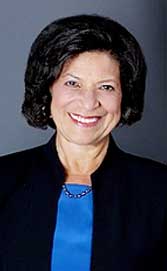In the original Mission: Impossible series, against all odds, through brilliant strategizing the good guys thwart stealth communist plots to undermine democracies. In trying to provide affordable, quality, personalized medical care, independent physicians face seemingly insurmountable obstacles: digging out from under piles of electronic paperwork, breaking free of third-party red tape, dodging hospital buyouts, and shielding patients from data mining and privacy intrusions.
But the biggest obstacle to great medical care is the socialist brigade rallying around Medicare for All, the proposed federally financed program that boasts no premiums, deductibles or copays, and medical, dental, vision and hearing benefits. What could possibly go wrong? As they say, show me the money. The Congressional Budget Office estimates the federal government will spend about $1 trillion on healthcare programs in 2018. A detailed Mercatus Center analysis concluded that Medicare-for-All would add $32.6 trillion to federal expenditures during its first 10 years.
Currently, payroll taxes and income tax on Social Security benefits fund Medicare’s Part A Hospital Insurance Trust Fund. The Centers for Medicare and Medicaid (CMS) estimates this fund will be depleted in 2026. General tax revenues and beneficiary premiums fund medical services coverage (Part B). Medicare for All would be financed by current Medicare funds – minus the insurance premiums – and would be supplemented by the ever-popular “taxing the rich.” Beware: the definition of “the rich” will be ratcheted down to encompass more taxpayers.
Then there is the coercive nature of Medicare. A beneficiary’s opting out of Medicare Part A means forfeiting all past and future Social Security benefits. Medicare for All makes it clear that no straying from the herd is allowed: neither private insurers nor employers can offer insurance that competes with the government.
Fortunately, more choices are becoming available for potential patients. The House of Representatives recently passed two packages of expansions of Health Savings Accounts (HSAs) (H.R. 6199, H.R. 6311). To name a few benefits, the contribution limit for an HSA nearly doubled to $6,650 for individuals and to $13,300 for families. HSAs would be allowed to pay for direct primary care (DPC) monthly fees. Best yet, anyone would be able to purchase a lower-premium catastrophic plan — removing the ACA’s under age 30 restriction. And purchasers of “bronze” and catastrophic (“copper”) plans would be able to contribute to an HSA.
Improving HSAs is not a trivial goal. HSAs are portable. HSA contributions reduce taxable income, money in the account grows tax-free, and money can be withdrawn tax-free to cover qualified medical expenses. The Employee Benefits Institute estimates that a person saving in an HSA for 40 years, assuming a 2.5% return, could accumulate up to $360,000.
The Executive Branch acted on CMS’s report that lower-cost alternatives were necessary given the rising premiums responsible for the decline in the purchase of unsubsidized ACA plans. The Administration created new rules for short-term limited duration (STLD) insurance policies, which are not bound by the ACA’s restrictive mandates.
STLD plans, defined by the Obama administration as less than three-months duration, can be up to 12 months duration and can include an option for guaranteed renewal up to 36 months. Californians may be out of luck if the proposed consumer protection legislation prohibiting STLD policies makes it to the governor’s desk.
According to CMS, in the fourth quarter of 2016 the average monthly premium for individuals for a STLD policy was approximately $124, compared with $393 for an unsubsidized ACA-compliant plan with comparable $5,000 deductibles. That is an annual savings of $3,228. Even adding $50 per month for a direct primary care practice, an individual saves $2,628 a year. With DPC, all primary care services, including chronic disease management and access to low-priced commonly used medications are included in the upfront price.
The HSA bills and the new STLD rules are an antidote to the erosion of our freedom to contract under the guise of protecting us from “junk” insurance. Medicare-for-All is not the cure for health care ills. Once the central planners lure the masses into dependence on “free” stuff, abuse of power ensues. Voluntary participation by physicians becomes mandatory. When the money tree withers, the non-negotiable provider payments are slashed, and services to patients are rationed.
To mitigate the unacceptable, sometimes fatal wait times in the Veterans Administration health system a bipartisan Congress looked to the backbone of great medicine: private practice physicians. Independent medical practices will lead the way to achieving great affordable medical care through competition and consumer choice.













 Dr. Marilyn Singleton is a Board-of-Directors member and President-elect of the Association of American Physicians and Surgeons (AAPS). She also is a board-certified anesthesiologist. She graduated from Stanford and earned her MD at UCSF Medical School. Dr. Singleton completed 2 years of Surgery residency at UCSF, then her Anesthesia residency at Harvard’s Beth Israel Hospital. While still working in the operating room, she attended UC Berkeley Law School, focusing on constitutional law and administrative law. She interned at the National Health Law Project and practiced insurance and health law. She teaches classes in the recognition of elder abuse and constitutional law for non-lawyers.
Dr. Marilyn Singleton is a Board-of-Directors member and President-elect of the Association of American Physicians and Surgeons (AAPS). She also is a board-certified anesthesiologist. She graduated from Stanford and earned her MD at UCSF Medical School. Dr. Singleton completed 2 years of Surgery residency at UCSF, then her Anesthesia residency at Harvard’s Beth Israel Hospital. While still working in the operating room, she attended UC Berkeley Law School, focusing on constitutional law and administrative law. She interned at the National Health Law Project and practiced insurance and health law. She teaches classes in the recognition of elder abuse and constitutional law for non-lawyers.



